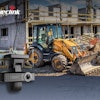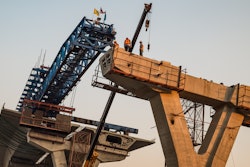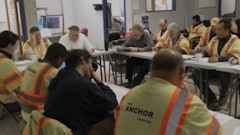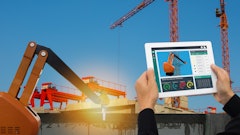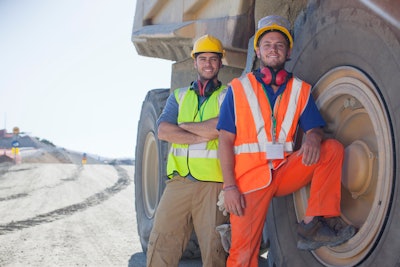
It's tough out there. The cost of doing business is increasing around every turn and construction business owners are grappling with labor shortages, extended timelines, supply chain disruptions and so much more. Still, there is work to be done and reasons to remain positive about the future of our industry. Here are five of them.
1. Increasing Industry Interest
Over the past few years, there has been a growing shortage of skilled trades workers. The Associated General Contractors of America found that 89% of contractors were having a difficult time finding workers who were trained for the job. That affects project timelines — 61% of contractors reported project delays because of these workforce shortages. The American Welding Society predicts a need for 400,000 more welders by 2024. In HVAC and electric, job openings are expected to grow by 14 percent through 2024. And the struggles continue on for every other industry segment needing workers.
While a shortage of workers is pushing wages higher in the skilled trades, the financial return from a bachelor's degree is softening, even as the price — and the average debt into which it plunges students — keeps going up. The astounding $1.747 trillion dollars of student debt is growing six times faster than our nation’s economy, and the average public school student borrows $30,000 for a bachelor’s degree.
In response, the proportion of high-schoolers who are considering a four-year education has plummeted from 71% to 48% since the start of coronavirus pandemic, according to a survey by the ECMC Group, a nonprofit student loan guaranty agency that also operates career schools.
What is increasing? Enrollment in trade schools.
Community college enrollment in agriculture-related programs increased 38% during the pandemic. Construction trade program enrollment is up 5% and transportation and material moving program enrollment was up 1%. With a growing number of people without a bachelor's degree starting to out-earn their four-year college peers, these numbers are only going to increase.
2. Long-Term Funding
The passage of the Infrastructure Investment & Jobs Act (IIJA) represents a historic investment in our nation’s core infrastructure priorities– including roads and bridges, rail, transit, ports, airports, the electric grid, water systems, broadband and more. There will be $550 billion in new spending over a five-year period, representing a huge opportunity for construction contractors to take advantage of new work.
The bill also contains the Surface Transportation Reauthorization Act which provides a five-year reauthorization of crucial programs (through FY26). This includes funding for competitive grants, formula grants, set-asides and more for federal surface transportation programs.
Sustainable funding should increase contractor confidence to bid for big projects as they are able to better plan out what the next five years look like.
3. Technology Adoption
Nestled in that $1.2 trillion IIJA, among the hundreds of billions dedicated to road improvements, dam repairs, clean energy credits and more, is a relatively small sum of money — $100 million — dedicated to construction technology.
The money will be disbursed over the course of five years, in $20 million-per-year increments. Construction technology has been advancing at breakneck pace and some contractors have jumped on board and started to adopt new ways of getting their work done. Most construction professionals see digital transformation as their biggest source of opportunity for the coming year and predict software will be essential to their success in estimating, project cost management, scheduling and risk management, according to InEight’s “Global Capital Projects Outlook 2021.”
Digital inspection will also be crucial as IIJA projects gear up. State Departments of Transportation pay contractors based on measurable criteria such as asphalt tonnage poured or number of acres cleared and contractors need to be able to meet them in that space. Technology is how that will happen.
4. Better Equipment & Safer Workers
In order to move forward and get the work done, construction contractors are going to need to take a hard look at their company and the resources they have and see if they are ready to compete. If there are areas where an upgrade is needed, now is the time to do so. Just like with new car models, upgrades and improvements are made to bulldozers, cranes, excavators, rollers, pavers and other heavy machinery each year, too. Upgrading assets improves your company’s efficiency, leads to a reduction in accidents and injuries, and may even contribute to helping you grow your client base.
Innovations are adapting very quickly to help contractors complete more work while keeping their crews safe. Telematics and other equipment technology is helping increase uptime and reduce the wasted man-hours caused by slow, outdated machinery that’s constantly breaking down.
Getting more work done doesn't mean anything if your crew is not safe. Older equipment has fewer fail-safe mechanisms, monitoring instruments and industry-specific upgrades, all of which can lead to malfunctions and jobsite accidents. Upgrading your equipment today allows you to keep your workers safe and prepare for the demands of even bigger projects tomorrow.
5. Infrastructure is Changing the World
From green buildings to electric vehicle charging stations and entire "Smart Cities," those working in construction are literally changing the world. Infrastructure is adapting and transforming to keep up with society’s demands as well as shifts in the physical environment. Stakeholders, engineers, designers and contractors are realizing that requiring "legacy infrastructure" to do more work, or work faster, is not the solution. Instead, we must recognize the shifting nature of what infrastructure is, what society needs it to do and who controls it.
According to UN Habitat, cities consume 78% of the world’s energy and produce more than 60% of greenhouse gas emissions. Infrastructure construction and its use, such as power plants, buildings and transport, are large contributors to that figure. The transportation sector is increasingly viewed as a potential design space for mitigating climate change and contractors are a big part of moving that initiative forward. The IIJA has several programs and provisions which allocate money to carbon reduction, resiliency, Healthy Streets and more.
Whether we like it or not, we are going to have to start doing things differently. Start now, get your learning curve out of the way, and be well-positioned to comply when regulations undoubtedly come our way.


